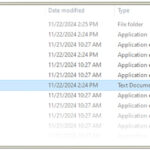Setting up a Samba Server on FreeBSD should be a straightforward process, yet sometimes your server may not appear in network places as expected. This can be a frustrating experience, especially after diligently following official documentation. Let’s delve into common causes and solutions for Samba server discovery problems specifically on FreeBSD systems.
One user encountered this very issue while implementing a FreeBSD server for file sharing within a home network environment. Despite successfully installing Samba and meticulously configuring the smb.conf file, the server remained invisible in their Linux Mint desktop’s network browser. Interestingly, they could still establish a connection by directly using the server’s IP address or hostname, suggesting the core issue lay in network discovery rather than a fundamental Samba malfunction. They experimented with different Samba versions (4.6, 4.7, and 4.8) and even performed a clean reinstall of FreeBSD, but the problem stubbornly persisted.
The user’s smb.conf file, as provided below, includes configurations for workgroup, server string, NetBIOS name, WINS support, security protocols, and a basic share definition. While the configuration appears generally sound for a basic setup, the root cause of discovery failures often lies in subtle network misconfigurations, name resolution glitches, or issues with service discovery protocols.
To effectively troubleshoot Samba discovery problems, consider the following systematic steps:
-
Verify Network Connectivity: Begin by ensuring your FreeBSD server has a valid IP address assigned and can successfully ping other devices on the same network. This basic step rules out fundamental network layer problems.
-
Examine nmbd Service Status and Logs: The
nmbdservice is crucial for NetBIOS name resolution and network browsing. Verify thatnmbdis actively running using service status commands. Critically, examine thenmbdlogs (typically found in/var/log/samba4/log.nmbdor similar) for any error messages related to name registration or browsing announcements. -
Confirm Workgroup Consistency: Ensure the workgroup name defined in your
smb.conffile precisely matches the workgroup configured on your client machines (e.g., Windows or Linux desktops). Mismatched workgroup names will prevent proper network neighborhood discovery. -
Investigate Firewall Rules: Firewalls on the FreeBSD server itself or network firewalls can inadvertently block NetBIOS name resolution or SMB traffic. Specifically, ensure that ports 137, 138, 139 (NetBIOS), and 445 (SMB) are open for traffic in your firewall rules.
-
Evaluate
interfacesandbind interfaces onlySettings: While theinterfacesandbind interfaces onlydirectives insmb.confcan be useful for controlling which network interfaces Samba uses, incorrect configuration can sometimes hinder discovery. As a troubleshooting step, temporarily comment out or remove these lines from yoursmb.confto see if it resolves the discovery issue. This will allow Samba to listen on all interfaces.
[global]
workgroup = WORKGROUP
server string = Samba Server Version %v
netbios name = bhyve
wins support = Yes
security = user
passdb backend = tdbsam
server role = standalone
local master = no
domain master = no
preferred master = no
interfaces = 10.10.10.232/24
bind interfaces only = yes
[mello]
path = /raid/cifs/mello
valid users = mello
writable = yes
browsable = yes
read only = noIn conclusion, resolving Samba server discovery problems often requires a methodical and step-by-step approach. By systematically checking network connectivity, service statuses, configuration details within smb.conf, and potential firewall restrictions, you can typically pinpoint and rectify the root cause. This ensures your FreeBSD Samba server becomes readily discoverable and accessible across your network for seamless file sharing.

